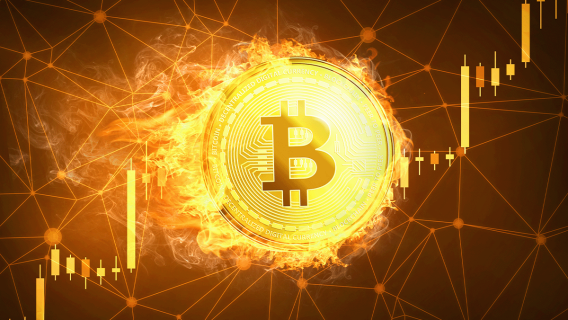Investing in cryptocurrencies and the technological rails that power them is a unique challenge, the likes of which most investors haven’t experienced since the rise of the internet over 20 years ago.
Both involve the rapid and widespread adoption of entirely new technologies, and both have (or had) the potential to change the ways we spend our time and money and even how we live our lives.
A core tenet of any crypto investing thesis is that our lives will become more digitized, not less. Metrics like time spent on screens, the proliferation of personal computers and smartphones and the increasing interconnectivity of smart technology in mundane places (like ovens, washing machines, or thermostats) all support that thesis.
But before you can start investing in crypto, you need to familiarize yourself with important aspects of the technology itself, something we’re keen to help with at Cabot SX Crypto Advisor. In that spirit, we’d like to answer a question that we encounter fairly frequently. What is the distinction between Layer One and Layer Two tokens?
Layer One Tokens
When people first think about cryptocurrencies their mind instantly goes to Bitcoin (BTC) or Ethereum (ETH). While those are the two largest blockchain networks by market capitalization, a blockchain network and its associated cryptocurrency are what are known as Layer Ones.
Put another way, a blockchain is a decentralized immutable ledger—a database recorded and validated by a global network of computers. Transacting in Layer One cryptocurrencies means you are interacting with the blockchain directly. Your buys, sells and transfers are recorded on that global ledger.
With BTC and ETH the computing power required to append your transaction to the end of the ledger translates to higher transaction fees and slower transactions. BTC is limited to roughly five transactions per second (TPS), with ETH at five to 10 (although developers are anticipating that an upcoming transition to ETH 2.0 will boost TPS significantly, perhaps as much as 10,000x). A company like Visa (V), on the other hand, can process 65,000 TPS.
We would like to highlight a better investment opportunity based on valuation and two essential properties that foster network growth: frictionless transactions and scalability.
While active projects on the Ethereum network work to address these issues, the current environment often results in high fees for users as the network becomes congested. Transacting in Bitcoin (BTC) today is more akin to trading a commodity.
There are numerous possible solutions in play, from other currencies to a secondary transaction layer that exists on the same underlying blockchain.
Layer Two Tokens
Layer Two tokens are currently being built to help scale Layer One blockchain networks like Ethereum. We see significant value from investing in best-in-class Layer Two tokens.
Layer Two solutions play an important role in the world of Defi (decentralized finance), as they aim to offload some of the stress on the blockchain networks by assisting with the validation and transaction processing. In doing so, they alleviate network congestion, which often leads to slower transaction times and spikes in fees.
The main technology behind Layer Two scaling solutions is called Zero-Knowledge rollups. This process takes bundles of data off the blockchain for processing and computing using a smart contract. It is called Zero-Knowledge because it is based on Zero-Knowledge Proofs (ZKPs), which are a method of authentication where no passwords or personal information are shared. ZKPs enable the display of value without providing additional information.
This process helps significantly because the code is not run on the blockchain itself – allowing for faster processing. After the information is processed, it is sent back to the blockchain for other parties to verify.
However, successful investing in Layer Two tokens requires identifying both the consensus long-term Layer One winner (ETH, BTC, etc.) and the Layer Two solution that ultimately comes out on top.
In Cabot SX Crypto Advisor we’ve identified Layer One tokens that are purpose-built to avoid the scalability issues of ETH and BTC as well as promising Layer Two tokens that are already improving those blockchain networks.
